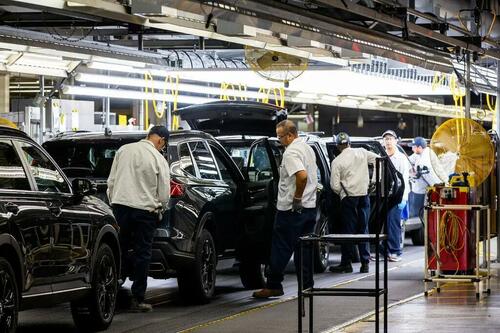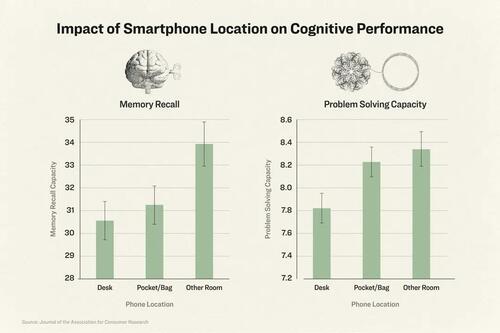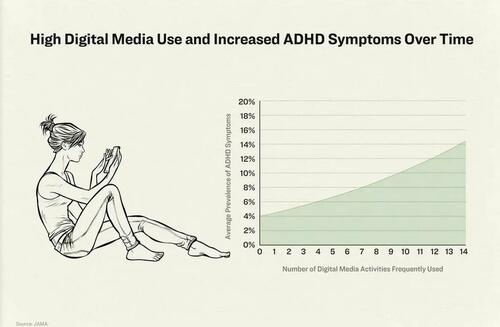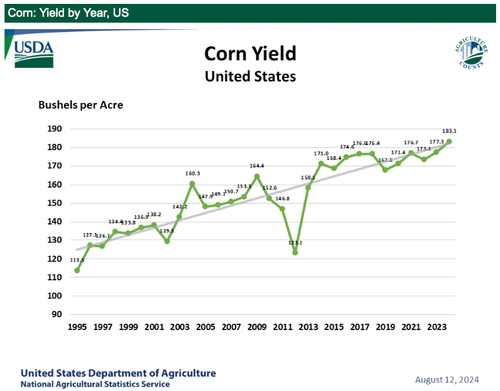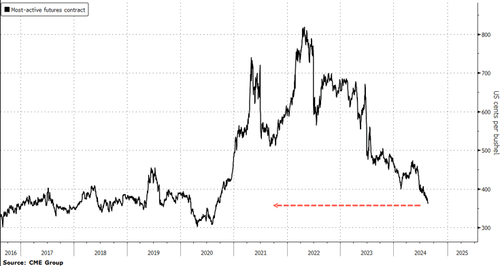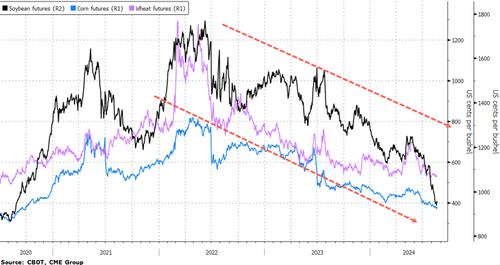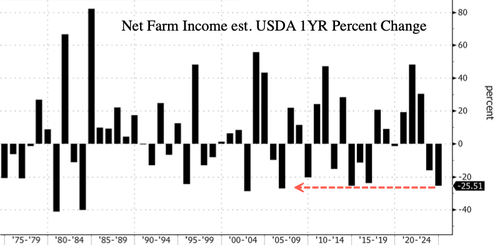“It’s A Nightmare In Every Direction”: In Communist Cuba, Elderly Left To Struggle On $10 Pensions
Authored by Autumn Spredemann via The Epoch Times (emphasis ours),
Cubans continue to flee a worsening economy in record numbers while the elderly have been left behind, fighting to survive on the communist regime’s $10 monthly pension and a critical lack of basic supplies.
Food, power, medical equipment, and pharmaceutical shortages have ignited persistent protests this year and driven Cuba’s ongoing exodus of working-age adults.
The result has been nothing short of devastating for the country’s retirees.
“It’s a nightmare in every direction. This is an SOS. Cuba is about to collapse in a fatal way,” said Ramon Saul Sanchez, a long-time anti-Cuban regime activist and president of the Democracy Movement in Miami.
“People can’t really imagine, especially from outside, making elderly people live in such inhumane conditions,” Sanchez told The Epoch Times.
“Because of the deterioration of the economy and the lack of interest of the Cuban regime, they aren’t helping those who need it,” he said. “Retirement pension maybe allows you to buy a dozen eggs a month. That’s it.”
With one of the oldest populations in Latin America, Cuba ranks high in its number of citizens older than 65 years, according to the Cuban Research Institute and Florida International University report.
The report noted the number of elderly dependents for every 100 working-age adults could soon reach 28 with the soaring volume of migrant outflows that began in 2022 expedited the problem.
U.S. Border Patrol agents apprehended nearly 425,000 illegal immigrant Cubans during fiscal years 2022 and 2023, according to Customs and Border Protection data.
An additional nearly 200,000 have been arrested in fiscal year 2024 through July.
These numbers have eclipsed previous large-scale migrations from Cuba to the United States, including the 1965–1973 Freedom Flights (approximately 300,000 Cubans) and the 1980 Mariel Boatlift (about 125,000 Cubans).
Plummeting birth rates have also fueled the acceleration of Cuba’s aging population for decades.
The trend became noticeable in the 1980s, but Cuba has been below replacement birth rates since 1978, according to an analysis published in the journal JSTOR.
The study authors stated that fertility rates climbed past 30 births per thousand citizens for several years following Fidel Castro’s 1959 revolution.
However, once the initial optimism of the communist regime faded, that rate declined by the late 1960s.
As of 1980, Cuba’s birth rate plummeted to a historic low of 14 per thousand.
As of 2024, the site Macrotrends observed Cuba’s birth rate now stands at just over nine per thousand.
In 2023, the deputy head of Cuba’s state-run National Office of Statistics and Information, Juan Carlos Alfonso Frag, appeared on the television program “Mesa Redonda” to address concerns over Cuba’s aging population.
Frag said the country has endured low fertility and high mortality rates for four years straight.
Meanwhile, relatives of Cubans living on the island say the lack of food and medical supplies is creating daily survival challenges for their loved ones.
Living on as little as $10 a month from their government pension, Sanchez explained that people who are too old to work often lack proper medication and nutrition.
Sanchez said the country’s communist party isn’t interested in helping its most vulnerable citizens, many of whom are former supporters of Castro’s revolution or even worked for the communist party.
Sanchez said Cuba’s entrenched regime now complains it doesn’t have enough money to pay out the pensions, claiming the country’s finances are too tight.
“People are dying. Elderly people are fainting in the streets from a lack of nutrition,” he said.
The daily survival fight for Cuba’s older residents is personal for Sanchez.
Sending Help
Of retirement age himself, Sanchez has a close friend to whom he has sent medical equipment and other supplies on many occasions.
Most recently he shipped health care items after his friend broke a leg.
Even the most basic medical supplies are scarce in Cuba.
Sanchez described the situation his friend dealt with upon arriving at a hospital with his leg broken in three places.
“They took a used cast they had propped up in the corner and put it around the knee. Then they put a piece of clothing to hold it in place and sent him home.”
When the leg didn’t heal, Sanchez’s friend was told by a doctor he’d need surgery.
“I had to send him everything for them [doctors] to do the surgery,“ Sanchez said with a heavy sigh. ”I’m literally talking about everything you need to do surgery.”
Without an urgent care package of antibiotics, bandages, stitches, and even anesthetics, Sanchez said his friend’s surgery wouldn’t have been possible.
Like so many, most of his friend’s family have either left the island or passed away.
Sanchez said his organization helps hundreds of Cubans in the same situation. Some have families in the United States that can ship supplies, but others are trapped and have no lifeline at all.
“We get calls like this every single day,” he said.
Author, co-founder, and spokesperson for the Cuban Democratic Directorate, Orlando Gutiérrez-Boronat, confirmed this.
“There is a severe shortage of medication because the regime is bankrupted and has no credit anywhere in the world,” he told The Epoch Times via text.
Boronat said the elderly are now paying a disproportionate price for years of economic mismanagement at the hands of Cuba’s regime.
This is especially concerning in healthcare, given the higher number of medical conditions that afflict the elderly.
In response to the mounting crisis, Cuba’s President Miguel Díaz-Canel fired economic minister Alejandro Gil Fernández in March.
This is underscored by multiple reports of health care worker and water shortages at Cuban hospitals.
Read the rest here…
Tyler Durden
Mon, 08/26/2024 – 22:35
via ZeroHedge News https://ift.tt/sCq6BfT Tyler Durden





